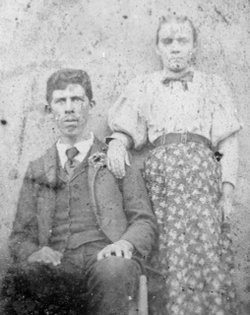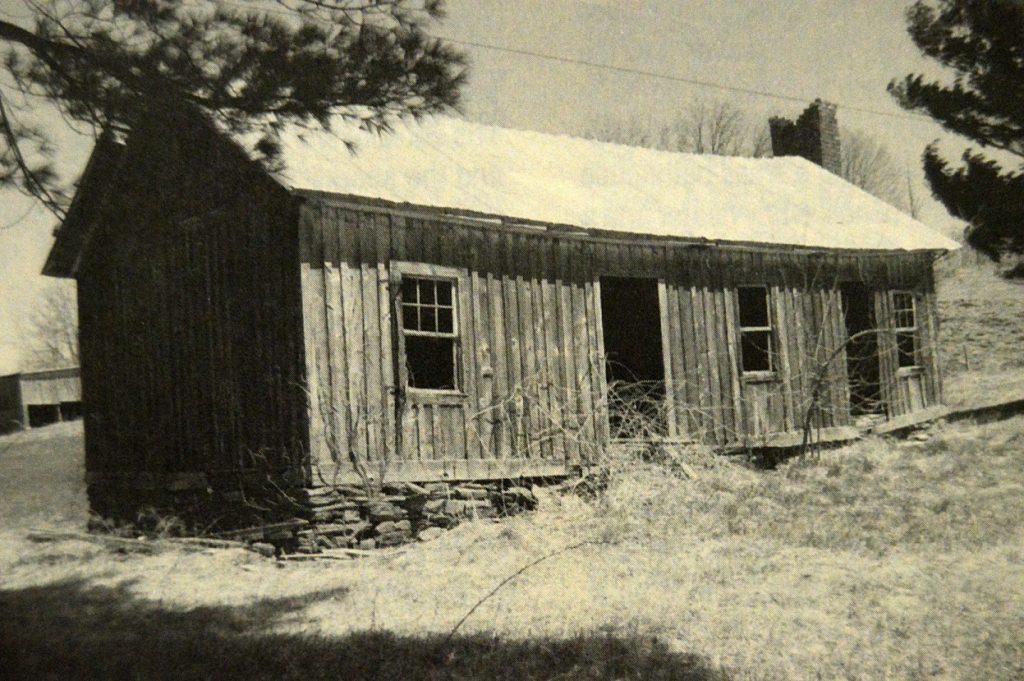In 1882, Jesse James, one of the most notorious criminals of the 19th century was murdered, ending a reign of terror that spanned a decade. James, along with his brother, had exploited the chaos arising in the wake of the Civil War to conduct a series of audacious robberies and murders, gaining national infamy in the process. Although their names are still known today, Frank and Jesse James were not the only lawless gang of brothers committing crimes in the years immediately following the Civil War. During this same period a gang, equally organized and audacious was spreading terror throughout Ashe County.

Linville Eller, born in 1852, was the grandson of Henry Eller, one of Ashe County’s earliest residents, who settled a farm at the foot of Phoenix Mountain around 1812. Although Linville was too young to serve in the Civil War, he was still witness to its strife, spending his formative years in the midst of bushwhackers, deserters, and a vengeful homeguard. The years following the Civil War were equally chaotic. Agriculture and industry in the South were slow to recover, and consequently, basic needs were difficult to acquire. Coffee, rice, sugar and other staples, as a result of their rarity, became especially valuable on the black market, and the numerous poorly secured general stores that were scattered throughout Ashe County made tempting targets for unscrupulous thieves.
Linville Eller, along with his brother Henry, organized a gang to take advantage of these opportunities for theft. As with the James Gang, this criminal enterprise was largely a family affair. Linville and Henry recruited their brothers George and J. Frank ‘Coon’ Eller, along with Junius Dunn. Soon they were utilizing organized schemes to rob local store owners. Gertrude Waddell, whose grandfather, James Eller, operated a store in Bina that was robbed by the gang, recalls the ingenuity of their approach. She related that “Grandpa, he had a big barrel; it would have coffee in it, and another sugar and another rice. And when he would get in some, he’d fill his barrels up. He finally go to knowing it was going too fast. He got toward the bottom and he found out. . . they’d got under the store and had mapped a place…They bored a hole in the rice barrel and they let down a bunch of rice and they got it up and stuck a plug in that hole. . . then they’d come over here and get in the coffee barrel and it had a plug in the bottom of it, then over here to the sugar. He caught them that way.”

Numerous stores and farmhouses all over Ashe County soon fell victim to the Eller gang, but, as with any criminal enterprise, the pressure of staying ahead of justice soon caught up with them. In 1888, the beginning of the end for the gang came in Nathan’s Creek. Here, at the crossroads of what is today Hoke Wagoner and Nathan’s Creek School Road, the gang robbed the store of Solomon V. Cox, an important local businessman and landowner. As a result of the increased notoriety of the Ellers, this robbery finally proved enough for a warrant to be issued for the gang’s arrest. The gang initially avoided capture, but soon a $200 reward was offered by the Governor of North Carolina for the arrest of Henry and Linville Eller.
On September 12th, 1888, a posse of men, commanded by Sheriff Miller, set out to capture Henry. The posse divided, and one group, including Alonzo McMillian surrounded a house they believed was being used as a hideout by Eller. Eller, who was in fact hiding inside, dashed through one of the doors, knocking McMillian to the ground. While lying on the ground, McMillian was able to draw his pistol and shoot Eller as he fled. Eller died from the gunshot wound. McMillian was initially charged with manslaughter, but given the nature of the shooting, he was cleared of the charge.
Henry’s brother, Linville, remained in hiding, but the rest of the Eller gang was soon captured. In order to obtain a fair trial, the criminal proceedings were moved to Watauga County. Junius Dunn, who was over a decade older than the other gang members, testified against his former criminal partners. Dunn’s testimony against the Ellers was detailed and damning. Dunn claimed that his participation in the gang was minor and that he was reformed, but testimony from Dunn’s daughter, Laura Ashley, who has seen stolen goods hidden in the woods by her father, confirmed Dunn’s equal participation in the crimes. All three men were convicted of robbery and sentenced to prison.
The ringleader of the gang, Linville Eller, remained at large. Initially, Eller fled the county. However, he soon returned, demonstrating little concern for local law enforcement. According to one newspaper article from the period ‘he had backed down squads of three men attempting to arrest him more than once.’ The same article goes on to note that ‘at the last tax paying [Linville Eller] paid his taxes and shook hands with the sheriff, who had a warrant for his arrest in his pocket.’
The reward for Linville still stood. Ed Johnson, a local resident has a strong desire to capture Eller, but didn’t own a gun. He partnered with John Z. Neal, who owned a large pistol, and the two set out to capture Ashe County’s most notorious outlaw.
In December of 1890, the pair tracked Linville to a local whiskey still. According to Gertude Waddell, who was privy to first hand accounts of the events, John Neal approached Eller with his pistol drawn and demanded that he surrender. Rather than give up, Eller reached for his own gun, but it hung on the holster. Fearing for his life, Neal shot Eller through the arm, hoping to incapacitate him. Eller, still refusing to surrender, instead reached for the gun with his other arm. Neal realized Eller was intent on killing him and shot Linville through the torso. Supposedly, Eller’s last words were “John, don’t shoot me no more, you’ve killed me now.” Even after his death Eller’s criminal tendencies were obvious: attendees to Linville’s funeral noted that the suit of clothes he wore in the coffin had been stolen from a local general store.
In the aftermath of the shooting, John Neal collected his reward for the killing of Eller. Eller’s widow, left with five children, the youngest only three at the time, sued Neal, demanding $5,000 in compensation for her loss. The case was thrown out of court, lacking facts sufficient to constitute a cause of action, but John Neal lived the rest of his life guilt ridden, dying of tuberculosis in 1902, ten years after the killing of Linville Eller.
Unlike Jesse James, the name Linville Eller has faded from the memories of most of Ashe County. Linville, along with his brother Henry, are buried in unmarked graves in the Barker-Eller-McNeil Cemetery on Parker Eller Road in Lansing. The general stores and houses that they robbed and the local residents who lived in fear of their attacks are now all gone, and the modern county that has supplanted them is more peaceful than the one that writhed in the chaos of the late nineteenth century. In the midst of the sleek new world it’s hard to imagine an entire county terrorized by an organized criminal enterprise; however, it was not all that long ago that even our tranquil hills were the home of a vicious gang of Appalachian outlaws.
Note: To hear Gertrude Waddell’s first hand recollection of the Eller gang’s robbery of her grandfather’s store and the story of Linville’s death, listen to Part 9 of her interview in the Oral History Project beginning at the 3:00 mark.
Interesting I’m going to send this to a family member that is doing our ancestors tree.
My Eller Ancestors lived in Lansing, N. C. and several cousins reside in Lansing. I love this article
Very well written article! I really enjoyed reading this.
I love hearing about my family.
Awesome post! Keep up the great work! 🙂
These Eller men are my great, great, great granduncles. I had researched them in the fall of 2019 and was able to find newspaper articles from newspaper.com regarding the death and trials of these men.
The store was also the Nathan’s Creek Post Office
I want too know more about Henry Eller